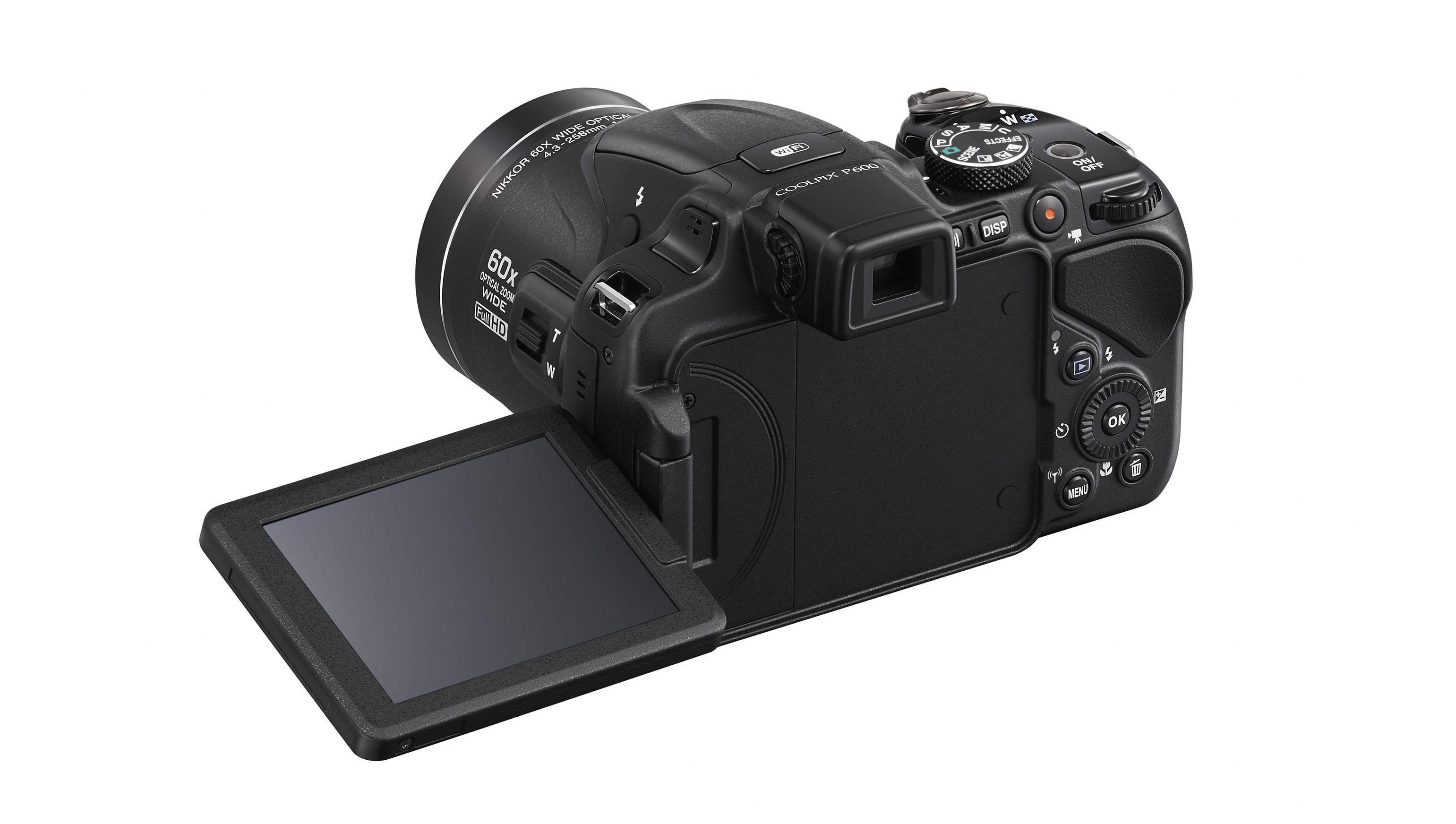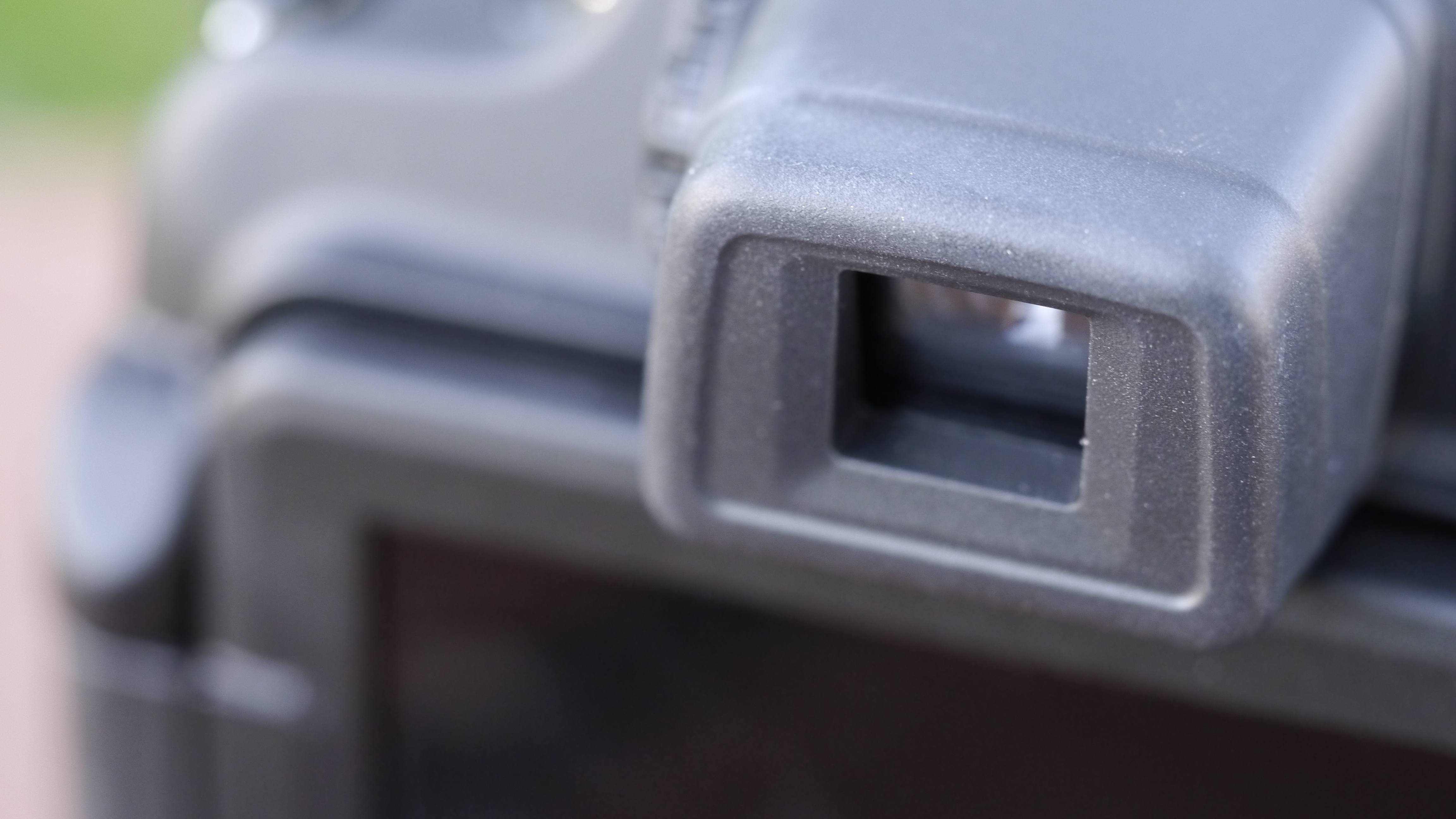TechRadar Verdict
Market leading 60x optical zoom and built in Wi-Fi make the P600 a solid bridge camera, but there are still several improvements Nikon could make.
Pros
- +
60x optical zoom
- +
Articulating screen
- +
Full manual control
Cons
- -
No raw format
- -
No touchscreen
- -
No EVF eye sensor
Why you can trust TechRadar
The bridge camera market seems to be relatively buoyant in what is an otherwise declining compact arena.
The main advantage of the bridge camera is their incredible zoom range. The P600 offers a market-leading 60x optical zoom, which puts it in the same bracket at the Panasonic FZ72 and the Sony HX400V, both of which also feature a 60x optical zoom.
In 35mm terms, the P600 offers an equivalent of 24-1440mm, giving it a huge potential reach. There's also a digital zoom functionality, which boosts that by four times to reach an even more impressive 5760mm.
Although cameras such as the P600 have a large body and, in many ways, have the same kind of styling and look as a DSLR, they have a small sensor, the same size as a compact camera so they belong in the compact camera market. The P600 has a 1/2.3 inch CMOS sensor with 16.1 million pixels.

The P600's predecessor seems to be the P520, as although Nikon has since released the P530, this has become Nikon's budget bridge camera option and the P600 has more in common with the P520.
Full manual control is available, although disappointingly, there's no option to shoot in raw format, which may put off some potential enthusiast photographers as it gives less scope for post-production editing.
There's also the option to shoot in semi-automatic modes, such as aperture priority and shutter priority, while there are also a range of automatic modes including scene modes. An effects mode, which allows for a number of digital filters to be used with images, such as cross processing, is also available.
Sign up for breaking news, reviews, opinion, top tech deals, and more.

On the back of the camera is a three-inch, 921k-dot LCD screen which is fully articulated – useful for shooting from awkward angles and for self portraits. It can also be folded inwards to protect the screen when not in use. It is joined by half-inch, 201k-dot electronic viewfinder.
Other interesting specifications include full HD video recording – and, as is starting to become equally as standard now, inbuilt Wi-Fi.
Build quality and handling
At first glance at the P600, you might be forgiven for thinking it was a small DSLR, not being too much smaller than the entry-level models in Nikon's line-up, such as the D3300.
Nikon has obviously gone all out in its SLR like styling of the camera. The handgrip is very pronounced, while a textured grip around it makes it feel very secure in the hand, and also helps to lend the camera a higher air of quality than some of the other cameras in the range, such as the P530 or the L830.

There's also a contoured section of the grip which helps the forefingers sit nicely where they should. Although the camera is relatively heavy, holding it one-handed feels pretty natural – although you'll probably want to grip it around the lens barrel wit hthe other hand a lot of the time to keep it steady – especially when using the far reaches of the telephoto optic.
On top of the camera is a mode dial for quickly switching between the different modes which the camera offers, including fully manual mode, semi-automatic (such as aperture priority) and the automatic, scene and effects modes. Also on top of the camera is a function button which controls a single parameter of your choosing – you can set the action it controls via the button itself, with options such as white balance, metering and image size available.

There's quite a few buttons on the back of the camera, arranged in a classic scrolling dial, four-way navigational pad style configuration. Each of the four directional keys controls something, with right accessing exposure compensation controls, up controlling the flash options, down controlling macro focusing and left controlling timer options. Here on the back is also a playback button, main menu and a delete button.
A scrolling dial within easy reach of the thumb on the back of the camera is used to alter shutter speed, when shooting in shutter priority or manual mode. The scrolling dial which forms part of the navigational pad is used to alter aperture, when shooting in aperture priority or manual mode.
If you want to shoot using the electronic viewfinder, you'll need to press a button just to the right of the EVF, which doesn't make for a very quick and fluid transition between the two. You'll need to press it again if you want to view images on the screen again. It would have been nice to see an automatic eye sensor on the viewfinder, especially for a camera at this price point.

The viewfinder itself is reasonable, for a bridge camera, but it's nowhere near the same league as some of the viewfinders currently found on compact system cameras. Still, it's nice to have if you prefer to work with it rather than screen. Due to the annoyance of having to press a button to activate it, I generally found that I preferred to use the screen.
Speaking of the screen, having full articulation makes it useful for shooting self-portraits, or from awkward angles, and the hinge it is attached with feels secure. It's also useful to be able to fold the screen away for protection too.
The camera can be controlled remotely via a free smartphone/tablet app for iOS and Android, or you can transfer images from the camera for easy sharing via social networks and so on. Once the camera and your phone have been connected, it's a pretty easy app to use – but it's very simple. When remote shooting, all you can do is take a picture, or zoom in and out, you can't alter any settings, such as aperture or shutter speed, which is a shame.

Amy has been writing about cameras, photography and associated tech since 2009. Amy was once part of the photography testing team for Future Publishing working across TechRadar, Digital Camera, PhotoPlus, N Photo and Photography Week. For her photography, she has won awards and has been exhibited. She often partakes in unusual projects - including one intense year where she used a different camera every single day. Amy is currently the Features Editor at Amateur Photographer magazine, and in her increasingly little spare time works across a number of high-profile publications including Wired, Stuff, Digital Camera World, Expert Reviews, and just a little off-tangent, PetsRadar.
